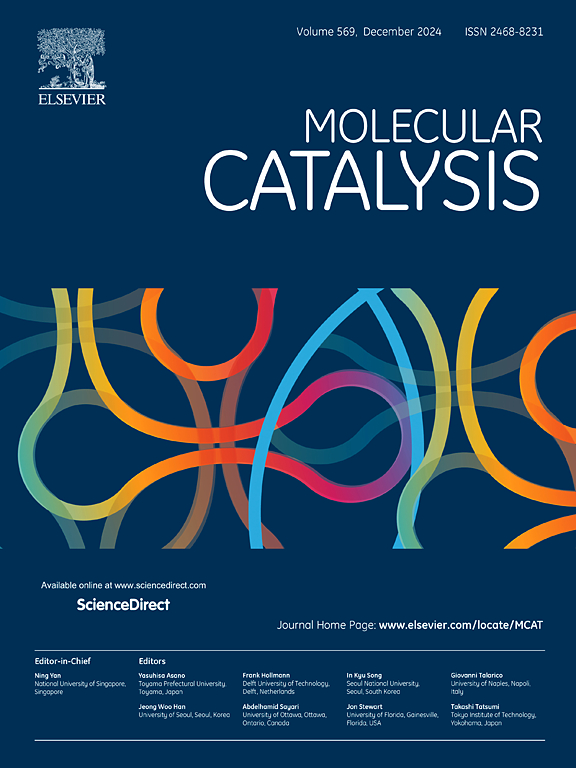Effect of the dielectric barrier discharge plasma on Cu-based catalysts supported on SiO2 for acetylene hydration
IF 3.9
2区 化学
Q2 CHEMISTRY, PHYSICAL
引用次数: 0
Abstract
Enhancing the catalytic performance of acetylene hydration catalysts remains a formidable challenge in current research. SiO2 was firstly employed as a support to synthesize Cu-based catalysts by dielectric barrier discharge plasma for the acetylene hydration reaction, achieving an impressive conversion of 95.9 % for acetylene and selectivity of 83.6 % for acetaldehyde within 8 h reaction time. The selectivity exhibits a relatively consistent stability within 30 h of reaction time. According to X-ray photoelectron spectroscopy (XPS) and X-ray diffraction (XRD), plasma treatment promotes the interaction between the active component and the support, which can enhance the anti-reduction properties of active copper components. Transmission electron microscopy (TEM) and acetylene temperature-programmed desorption (C2H2-TPD) reveal that plasma treatment markedly improves the dispersion of Cu species and enhances the acetylene adsorption capacity, thereby leading to an improvement in catalytic performance.

求助全文
约1分钟内获得全文
求助全文
来源期刊

Molecular Catalysis
Chemical Engineering-Process Chemistry and Technology
CiteScore
6.90
自引率
10.90%
发文量
700
审稿时长
40 days
期刊介绍:
Molecular Catalysis publishes full papers that are original, rigorous, and scholarly contributions examining the molecular and atomic aspects of catalytic activation and reaction mechanisms. The fields covered are:
Heterogeneous catalysis including immobilized molecular catalysts
Homogeneous catalysis including organocatalysis, organometallic catalysis and biocatalysis
Photo- and electrochemistry
Theoretical aspects of catalysis analyzed by computational methods
 求助内容:
求助内容: 应助结果提醒方式:
应助结果提醒方式:


